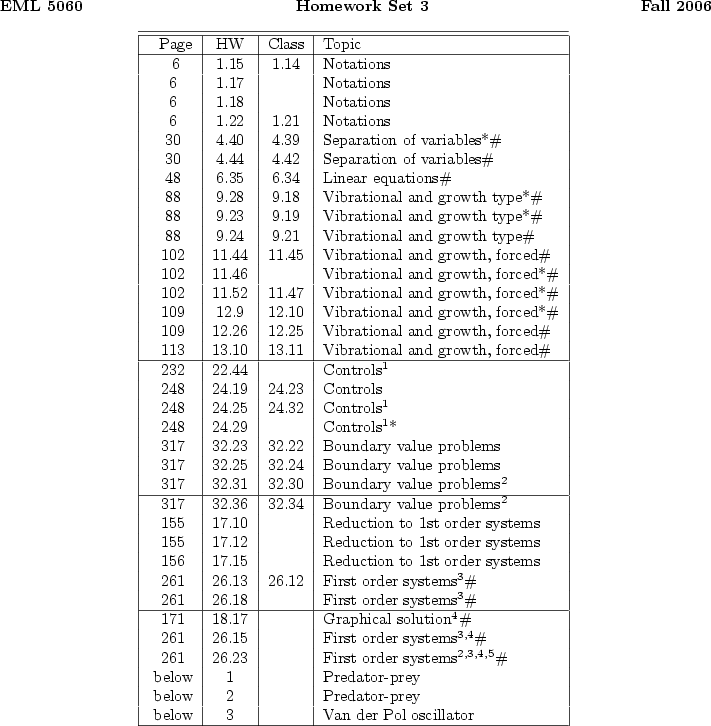|
|
|
Tentative list.

Find the two critical points of this system and classify them according to type. What can you say about the topology of the linearized solution near the two points? And what about the topology of the full nonlinear solution?
*: Recommended question. Not required if you know you can do it.
#: Make a graph. For problems with more than one unknown parameter, draw the independent solutions. For systems, draw the solution/ all solutions in the phase plane.
![]() : Simplify the transformed solution using partial fractions.
: Simplify the transformed solution using partial fractions.
![]() : Solution appears to be wrong.
: Solution appears to be wrong.
![]() : Solve as a system, but do not use
: Solve as a system, but do not use ![]() . Use
eigenvectors.
. Use
eigenvectors.
![]() : Sketch the solution curves using the actual eigenvectors.
: Sketch the solution curves using the actual eigenvectors.
![]() : Ignore the given initial conditions in sketching the solution
curves.
: Ignore the given initial conditions in sketching the solution
curves.